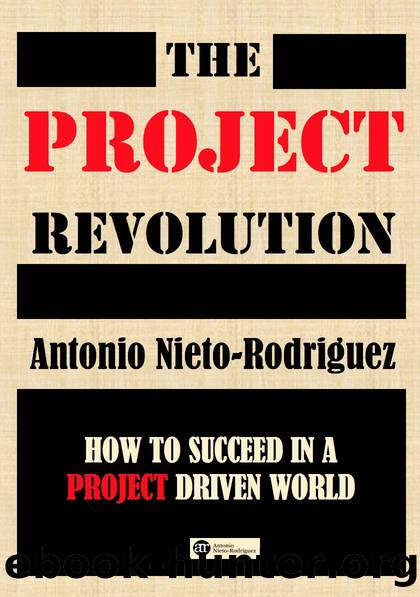The Project Revolution: How to Succeed in a Project-Driven World (The Project Economy) by Nieto-Rodriguez Antonio

Author:Nieto-Rodriguez, Antonio [Nieto-Rodriguez, Antonio]
Language: eng
Format: epub
Published: 2020-06-15T16:00:00+00:00
Tools to use
Stakeholder analysis matrix: This matrix is the most frequently used for weighing and balancing the interests of those who are impacted by or involved in the changes a project will bring about. Whenever possible, address their needs to meet the project’s objectives. As opposed to the risk appraisal, which should be carried out with a larger group, stakeholder analysis should be performed in a smaller group, as some of the discussions can be quite sensitive.
The initial assessment is usually performed during the preparation phase by the project leader with the project sponsor. After the major stakeholders have been identified, each one is categorized according to two dimensions. The first is the level of interest (positive or negative) in the project or its outcome. The second is the level of influence (positive or negative) that the stakeholder could have on the project. Usually this dimension is linked to the power of the individual or group in the organization. The third is using the colour coding RAG (red, amber and green) to indicate the stakeholder’s current position towards the project.
The analysis can be done on a regular basis to track the changes in stakeholders’ attitudes over time. Figure 13 is an example of a stakeholder matrix that you can use as a basis to identify and address the stakeholders impacted by and involved in your project.
Download
This site does not store any files on its server. We only index and link to content provided by other sites. Please contact the content providers to delete copyright contents if any and email us, we'll remove relevant links or contents immediately.
CBAP CCBA Certified Business Analysis Study Guide by Susan Weese(787)
Making Things Happen by Berkun Scott(687)
PMP Certification All-In-One Desk Reference for Dummies by Cynthia Stackpole Snyder(670)
12 Months to $1 Million by Ryan Daniel Moran(572)
97 Things Every Scrum Practitioner Should Know by Gunther Verheyen(547)
Project Management for Non-Project Managers by Jack Ferraro(540)
Microsoft Project 2016 Step by Step by Carl Chatfield & Timothy Johnson(532)
Computer Memory: Develop A Computer Like Memory In 5 Minutes A Day (Think Faster, Smarter, Sharper) by Michael Davis & Tim Wilkingson(510)
CAPM Certified Associate in Project Management Practice Exams by James L. Haner(487)
Clever by Alessandro Lanteri(472)
The Fast Forward MBA in Project Management by Verzuh Eric;(469)
Your Project Management Coach by Bonnie Biafore & Teresa Stover(464)
Rizvi's CAPM Exam Prep Guide by S. Hasnain Rizvi(463)
Management of Portfolios by Best Management Practice(458)
Leading Lean by Jean Dahl(441)
Fixing Your Scrum by Ryan Ripley(440)
Practice Standard for Work Breakdown Structures - Third Edition by Project Management Institute(425)
Microsoft Project 2013: Step by Step(420)
Agile by Harvard Business Review(417)
